Nov 20, 2020 | Anxiety, Children, Coronavirus, Holidays, Uncertainty
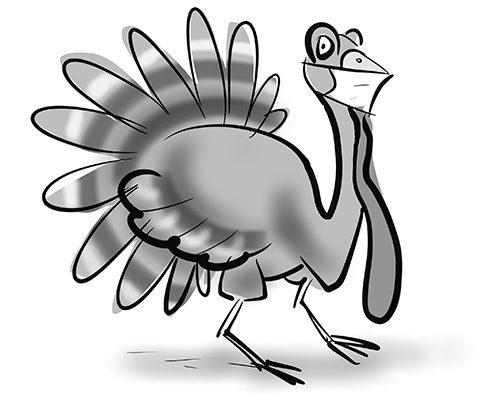
Last night I called my kids to let them know we would not be visiting them this holiday season. The call broke my heart. All three of them live in Washington State, and we had planned to rent a house up there for a couple of weeks so that we could have some cozy time together, making meals and playing games. The loss of not seeing them made me sad. I was also anxious making the call because I didn’t want to hurt their feelings. Maybe they would think we were overreacting, or worse yet that we did not care about them enough.
This holiday season, we have hard choices to make between our personal health versus our family and tribal bonds. We need both to survive, but right now you can’t have one without risking the other. Faced with decisions like this, we long for the normal holiday stress of the “good old days” before COVID.
Find your truth
The first step making decisions about family gatherings this year is to check in with ourselves and define our personal desires and boundaries. Who do you feel comfortable seeing if anyone? What restrictions are necessary to allow you to feel safe? …to keep your loved ones safe? Find your own truth with regard to these questions before you enter into any conversation with others. For help identifying your desires or where your boundaries lie, you can use a pros and cons list.
Express your truth
If you have boundaries that will require keeping loved ones at a longer distance, or perhaps not gathering together at all, the fear of disappointing them will arise. I knew I could not control how my kids felt when I told them we were not coming to visit; I could only control how I said it. It is useful to review the three steps to assertive communication. I define assertiveness as speaking my truth as clearly as possible, while being sensitive to the others person’s feelings, without taking responsibility for them. This can be a balancing act. Here are three steps to assertive communication.
Step 1. Start out with empathy and validation. For example, I could begin by saying, “Kids, we were really looking forward to visiting you for the holidays and I know you were looking forward to it as well.”
Step 2. State the problem. For example, “With COVID on the rise, we don’t feel comfortable traveling and possibly increasing our risk of contracting the virus.”
Step 3. Define clearly what you want to do. For example, “We have decided we are not going to come up during the holidays this year. We can plan a special get together once a vaccine is available, or we could plan a shorter visit once COVID in better under control.
The right decision
After reducing the increased risk of contagion, I was left with the risk of my children’s disappointment over our decision. We so often get hung up thinking that the right decision is one where we can eliminate all risk, guarantee a happy ending. But there is no “right” decision between the risk of getting sick and the risk of hurting people’s feelings. Everyone’s situation is unique to them, and the “rightness” of our choice depends on whether we’ve examined ourselves enough to know our truth and found the courage to express it.
For me, the right decision was to speak my truth and keeping an open heart, even though it hurt. This pain is what makes us human. It is what we have in common. And ultimately our capacity to feel it will keep us connected to one another, whether we can see each other this holiday season or not.
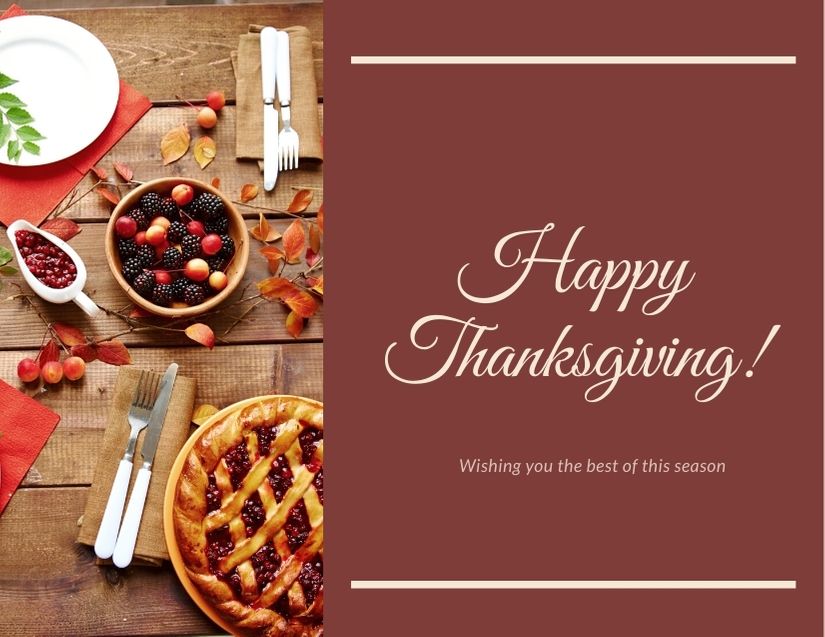
Aug 3, 2020 | Anxiety, Coronavirus, Uncertainty
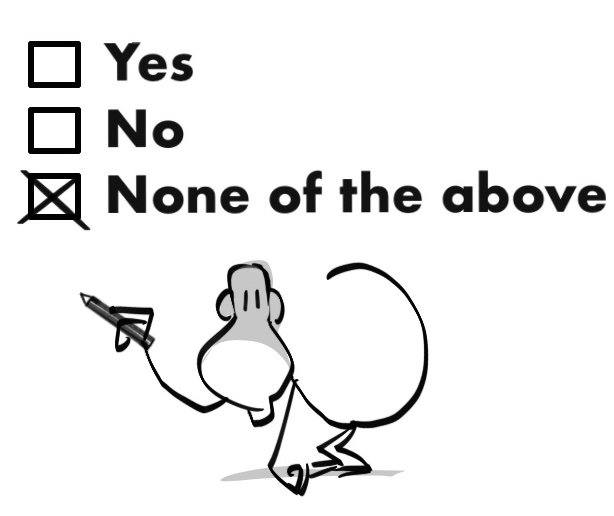
Should I return to the office…Get my haircut…Send my kids back to school?
My client Tom had been working from home since the pandemic hit in March, but now his boss had set a date for returning to the office, in only three weeks. Tom felt anxious about prolonged exposure to his co-workers, as his partner had an underlying health condition. He was stuck on what to do. Should he negotiate to continue working from home, or comply with his boss’s request to go back to the office? One choice could put his job at risk, the other his partner’s health.
When there is no downside to a decision, we can feel confident about our choice. But many of the decisions we face today have pros and cons, complex situations like school options for our children, vacation and wedding trips, and making doctor and dentist appointments. Our limbic system is designed to warn us away from negative consequences with negative emotions like anxiety and fear. The only agenda of this monkey mind is safety.
Trying to please the monkey keeps us stuck in a loop of worry and indecision. Before we can make complex decisions with confidence, we need to understand that our purpose is not to eliminate choices that have cons, but to accept the uncertainty that accompanies them.
4-Step Decision Making Protocol
To help my clients move from of obsessive worry to confident decision-making, I’ve developed this 4-step decision making protocol.
Step 1. In two separate columns, write down the pros and cons for one of your choices. My client did this for returning to the office.

Step 2. Assign a numerical importance to each pro and con, on a scale of: 3=Very Important, 2=Important, 1= Somewhat Important. Don’t overlook this step; not all reasons are equal. Tom had more pros than cons, but putting a numerical value on each helped him weigh the importance of each.

Step 3. Total up each column.
Pros 4, Cons 6. For Tom, clearly the cons of returning to the office outweighed the pros.
Step 4. Make a final decision.
Tom decided he would negotiate with his boss to continue to work from home. This triggered anxiety about displeasing his boss and appearing demanding, but the exercise he’d done had convinced him he’d chosen as wisely as was possible. Rather than retreating from his decision, Tom chose to accept the cons that came with negotiating with his boss.
Accept Uncertainty = Confidence
The confidence that Tom sought could only be gained by standing up for his choice, owning it, despite the uncertainty of the outcome. Only when we accept the risk inherent in every choice, can we grow from the decisions we make. This is how to make the “right” decision and how to gain true confidence in ourselves.
Download a printable Pros and Cons Worksheet here!
May 28, 2020 | Anxiety, Coronavirus
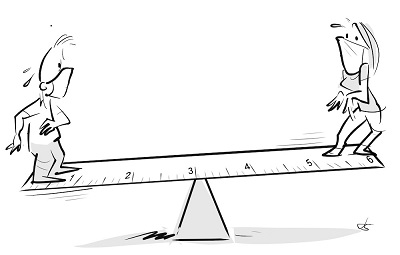
In the grocery store, you are told to stand back on the red line. You feel ashamed for not seeing it in the first place.
You tell your in-laws you are not comfortable having them visit their grandchildren in person, and you worry that they may never forgive you.
Someone asks you to stand farther away from them, and you feel embarrassed for making them feel uncomfortable.
You leave your house to go for a walk, wondering if you should wear a mask all the time, or just when you can’t maintain a safe distance. You feel anxious and unsure.
You reach out to pet a friendly dog, and when the owner asks you to please not touch their dog, you feel hurt.
You are wearing a mask while out on a walk, when a tickle in your nose brings on a loud sneeze. You look around guiltily to see if someone is angry for you possibly spreading germs in public.
Even if you didn’t have social anxiety before COVID, you probably have it now!
Social anxiety is defined as the fear of being judged, criticized or rejected by others. Those of us with social anxiety think that if we do things just right, we can avoid disappointing others and escape the dreaded possibility of being judged. Immunity from others’ judgments is always an unrealistic expectation, and now, with the rules changing, and a variety of opinions about what is safe, it is even more impossible.
Since we are bound to make mistakes following rules, and upset strangers, friends and family, this crisis is an opportunity to build some resilience to others’ judgments.
Three Essential Strategies to Decrease Social Anxiety
- Set a realistic intention when you venture out in public. It is impossible to follow rules that will please everyone, so instead, follow the rules that make the most sense to you based on recommendations from reputable sources. Expect and accept that others may not approve, adopting the expansive mindset -If I displease someone, I can forgive myself, whether they forgive me or not.
- Curb the urge to seek reassurance from others that you are doing the right thing. Getting reassurance reinforces the belief that if we do everything right, we will avoid criticism. True confidence comes from allowing for mistakes and accepting that we cannot please everyone.
- Allow any feelings of shame and embarrassment that arise to dissipate on their own. Negative emotions are not a sign that you have done something wrong. It is natural and inevitable that we will feel uncomfortable in uncertain social situations. When we open to uncomfortable emotions, rather than contract or try to distract ourselves from them, they will change more quickly.
To help yourself learn to welcome uncomfortable feelings that may arise from socially distancing situations where you feel anxious, download this imaginal meditation, Be All Right, Even When You’re Wrong.
There has never been a better time than now to practice self-compassion and tolerance for others’ judgments. Using these three strategies, we can gain confidence that empowers us to be more comfortable, more authentic in social settings. That’s confidence we’ll be grateful for long after this crisis passes!
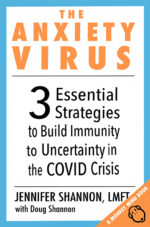
THE ANXIETY VIRUS: 3 Essential Strategies for Building Immunity to Uncertainty in the COVID Crisis
Now available both in Kindle and paperback format.
This article first appeared as an “Ask the Experts” article on the Anxiety and Depression Society of America website.
May 26, 2020 | Anxiety, Coronavirus
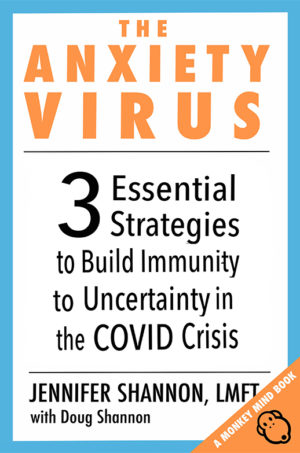
As the COVID crisis was revealing itself to us in late February, I was just finishing up a book on uncertainty. But over the past few months, we’ve become subject to a heightened level of uncertainty we’ve never known before that is creating much anxiety. That’s why I, with help from my husband Doug, have written a short new book with tools to cope with the unique uncertainties we are all facing NOW.
Health: Will I or my loved ones get sick and die? Are my elderly parents safe? Are these body sensations signs of Covid-19? Dare I go back to work?
Finances: Do I have enough money? Can I get government aid? Will my retirement fund recover? Can I pay my rent or mortgage? Will I lose my job? Will the company I work for reopen?
Supplies: Toilet paper, flour, rice, medications, meat—will there be enough?
Social: How much should I social distance? How much should I connect online? Will I lose my friends and connections?
General: How long will this last? Will my children fall behind academically? Do our elected officials know what they’re doing?
The Anxiety Virus addresses the uncertainties we face today, and every day for the foreseeable future. I believe this crisis is an opportunity. We can either contract, and try to white knuckle our way through this, or we can expand our capacity to accommodate everything that’s happening. This book gives strategies to help us not only survive this crisis, but to actually thrive.
COVID-19 has plunged us all into an atmosphere of extraordinary uncertainty, but with the right strategies, we can respond and adjust. Resilience to uncertainty is what we need right now. It will give us the flexibility and confidence we need to master any crisis!
This book comes with additional online audio meditations and downloadable worksheets!
Because of the urgent timeline, we decided to self-publish The Anxiety Virus on Amazon. It is now available both in Kindle and paperback format, and I invite you to order a copy. If you find it useful, I hope you’ll take the time to rate it, or if your so moved, leave a few words of review. Without a publisher, we’ll need some help to get the word out!
Since the “Look Inside” preview is not yet activated at Amazon.com, you can take a look inside and learn more here.
Endorsements…
“Jennifer Shannon has written a timely, readable and completely relevant guide to managing anxiety in these uncertain times. She has a knack for simple phrases that capture profound truths — such as “let fear metabolize” and “reasonable precaution enables reasonable risk”. Her conversational story-telling style universalizes these insights and guides the reader to a gentle practice of venturing out.”
Sally Winston, PsyD
Co-author of Needing to Know for Sure: A CBT-Based Guide to Overcoming Compulsive Checking and Reassurance-Seeking and Overcoming Unwanted Intrusive Thoughts,
“You can’t solve each new crisis that arises. But you can master the ability to tolerate uncertainty. The task is difficult, but it is simple. Spend some time with Jennifer Shannon’s book, and your body and mind will thank you for it.”
Reid Wilson, PhD
author of Stopping the Noise in Your Head
“Great suggestions for quieting inner turmoil, complete with specific examples of how we might cope with the challenges of media overload, fearing shortages of toilet paper, taking sniffles as a sign of death, and more. Great reading while you shelter in place!
Dave Carbonell, PhD,
“Coach” of the popular self-help site, anxietycoach.com, is the author of Panic Attacks Workbook, The Worry Trick, Fear of Flying Workbook, and Outsmart Your Anxious Brain: Ten Simple Ways to Beat the Worry Trick
May 8, 2020 | Anxiety, Coronavirus
On Monday May 4th, 2020 @ 2pm I participated in a discussion on the “About Health” radio program with Rona Renner, RN on radio station KPFA 94.1 FM in the San Francisco Bay Area. If you missed the live broadcast you can listen to the reply below.
We discussed ways to manage anxiety and build resilience.
With the Covid-19 Pandemic, anxiety about our health, safety, and future is high! It’s hard to relax when there is so much uncertainty. For many people it’s particularly challenging. Under normal conditions anxiety disorders affect 40 million adults in the US age 18 and older, and is thought to be the most common mental health problem in the US.
May 1, 2020 | Anxiety, Coronavirus

On Monday May 4th, 2020 @ 2pm I will be participating in a discussion on the “About Health” radio program with Rona Renner, RN on radio station KPFA 94.1 FM in the San Francisco Bay Area. You can also listen to the live stream online at https://kpfa.org/program/about-health/.
We will be discussing ways to manage anxiety and build resilience.
With the Covid-19 Pandemic, anxiety about our health, safety, and future is high! It’s hard to relax when there is so much uncertainty. For many people it’s particularly challenging. Under normal conditions anxiety disorders affect 40 million adults in the US age 18 and older, and is thought to be the most common mental health problem in the US.
Call us with your concerns and questions: 1-800-958-9008
About our guest –
Jennifer Shannon, LMFT is a licensed psychotherapist and a Certified Diplomat in Cognitive-Behavioral Therapy specializing in anxiety. She has over thirty years of experience treating children, teens and adults. She is the author of five books, including Don’t Feed The Monkey Mind, The Anxiety Survival Guide for Teens, and Monkey Mind Workbook for Uncertainty to be published August of this year. She is coming out with a kindle book this month called The Anxiety Virus, Five Essential Practices to Build Immunity to Uncertainty. She speaks regularly at national conferences and has been featured on radio programs, in magazines and newspapers. She co-authors her books with her husband Doug, a gifted illustrator. Find out more about Jennifer Shannon at www.jennifershannon.com











Recent Comments